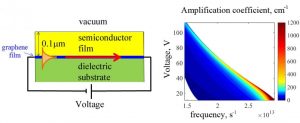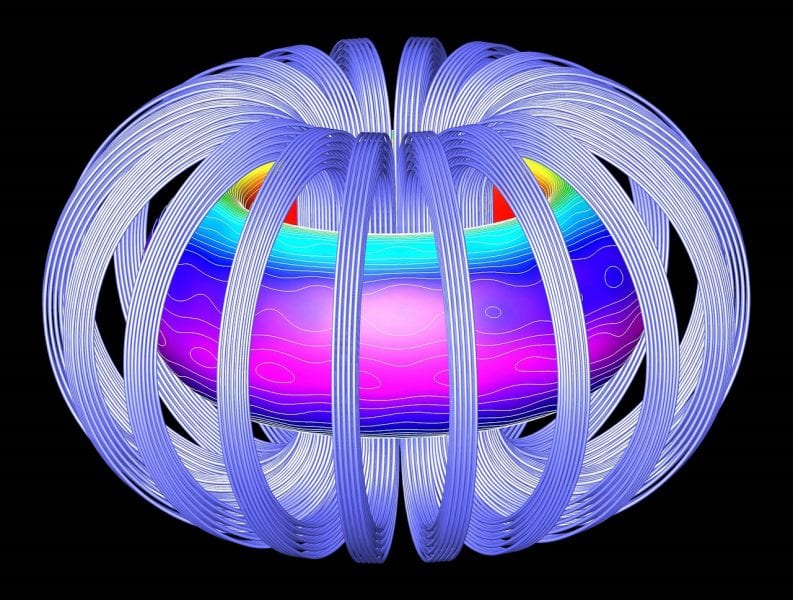А surface plasmon polariton in planar structures is an electromagnetic excitation that propagates along the surface of conducting and dielectric media. In contrast to optical beams propagating in three dimensions, surface plasmon polariton is a surface electromagnetic wave, whose electromagnetic field decays exponentially with increasing distance from the interface into each medium. Surface plasmon polariton-based devices exploiting the enhancement of the electromagnetic field at the interface are widely used in chemo- and bio-sensors. The quasi-two-dimensional nature of surface plasmon polaritons opens an opportunity for constructing nanoscale photonic circuits which will be able to carry optical signals and electric currents. However, ohmic losses are inherent to all plasmonic devices so that further development of integrated plasmonics requires implementation of efficient loss compensation techniques and amplification of surface plasmon polariton waves.
 A group of researchers from Ulyanovsk (Russia), Veliky Novgorod (Russia), Donetsk (Ukraine), and Mons (Belgium) have proposed a surface plasmon polariton amplification mechanism due to energy transfer from an electron drift current wave propagating in graphene into a far-infrared slow surface electromagnetic wave propagating along a semiconductor-dielectric boundary in waveguide geometry. A necessary condition of the interaction of these waves is the phase matching condition, when the phase velocity of the surface wave approaches the drift velocity of charge carriers in graphene. The crucial advantage of using graphene in such a technique is a large (potentially the largest of the known) mobility of the charges forming the drift current. The current carried by charges in graphene can be considered to be perfectly localized at the interface of the media, which also provides an effective interaction of drift current and a surface wave. It is shown that in the spectral region of the surface plasmon polariton slowing-down its amplification coefficient can reach values substantially exceeding the ohmic loss coefficient of the surface wave in the structure. Moreover, the amplification coefficient can be varied with the applied voltage through the change of the drift velocity.
A group of researchers from Ulyanovsk (Russia), Veliky Novgorod (Russia), Donetsk (Ukraine), and Mons (Belgium) have proposed a surface plasmon polariton amplification mechanism due to energy transfer from an electron drift current wave propagating in graphene into a far-infrared slow surface electromagnetic wave propagating along a semiconductor-dielectric boundary in waveguide geometry. A necessary condition of the interaction of these waves is the phase matching condition, when the phase velocity of the surface wave approaches the drift velocity of charge carriers in graphene. The crucial advantage of using graphene in such a technique is a large (potentially the largest of the known) mobility of the charges forming the drift current. The current carried by charges in graphene can be considered to be perfectly localized at the interface of the media, which also provides an effective interaction of drift current and a surface wave. It is shown that in the spectral region of the surface plasmon polariton slowing-down its amplification coefficient can reach values substantially exceeding the ohmic loss coefficient of the surface wave in the structure. Moreover, the amplification coefficient can be varied with the applied voltage through the change of the drift velocity.
The text is kindly provided by the authors.

















